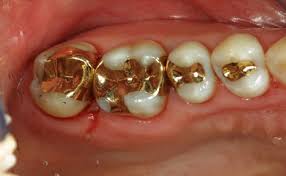By a Dentist, for Dentists
Dental fillings are one of the most fundamental and transformative aspects of modern dentistry. They are the unsung heroes of oral health, restoring function, aesthetics, and confidence to millions of patients worldwide. But have you ever stopped to think about how far we’ve come in the world of dental fillings? From ancient civilizations using primitive materials to today’s cutting-edge biomimetic restorations, the evolution of dental fillings is a fascinating tale of innovation, science, and artistry.
In this blog, we’ll take a deep dive into the past, present, and future of dental fillings. Whether you’re a seasoned practitioner or a new graduate, this journey will remind you why dentistry is one of the most dynamic and rewarding fields in healthcare.
The Past: A History of Ingenuity and Adaptation
The story of dental fillings begins thousands of years ago, long before the advent of modern dentistry. Archaeological evidence shows that ancient civilizations were already experimenting with ways to repair decayed teeth.
- Ancient Times (2000 BC – 500 AD):
The earliest known dental fillings date back to 6500 BC, where beeswax was used to fill cavities in a Neolithic tooth found in Slovenia. Fast forward to ancient Egypt, and we see the use of gold and other metals to restore teeth. The Etruscans, around 700 BC, were pioneers in using gold foil for dental restorations, showcasing an early understanding of biocompatibility. 
- Middle Ages (500 AD – 1500 AD):
During this period, dental care was often crude and painful. Materials like lead, tin, and even crushed bone were used to fill cavities. Unsurprisingly, these materials were far from ideal, often leading to further complications. - 19th Century: The Birth of Modern Dentistry:
The 1800s marked a turning point in dental fillings. Amalgam, a mixture of mercury, silver, tin, and copper, was introduced in the early 19th century. Despite controversy over its safety, amalgam became the gold standard due to its durability and ease of use. Gold foil also gained popularity among elite patients, offering a more aesthetic and long-lasting option.

- Early 20th Century:
The introduction of silicate cements in the early 1900s provided a more aesthetic alternative to amalgam, though it lacked durability. This era also saw the rise of porcelain inlays and crowns, paving the way for more advanced restorative techniques.
The Present: A Blend of Science and Artistry
Today, dental fillings are a testament to the incredible advancements in materials science, adhesive dentistry, and digital technology. Modern dentistry prioritizes not only function but also aesthetics, biocompatibility, and minimally invasive techniques.
- Composite Resins:
Composite fillings have revolutionized restorative dentistry, they offer excellent aesthetics, bonding directly to the tooth structure. With advancements in nanotechnology, modern composites are stronger, more wear-resistant, and capable of mimicking the natural translucency of enamel. - Glass Ionomer Cements (GIC):
GICs are a popular choice for pediatric dentistry and non-load-bearing restorations. They release fluoride, offering preventive benefits, and bond well to both enamel and dentin. - Ceramics and CAD/CAM Technology:
The advent of CAD/CAM systems has transformed the way we approach dental restorations. Materials like lithium disilicate and zirconia offer unparalleled strength and aesthetics, allowing for same-day crowns, inlays, and onlays. - Minimally Invasive Dentistry:
The focus has shifted from “drill and fill” to preserving as much natural tooth structure as possible. Techniques like air abrasion, laser dentistry, and bioactive materials are helping dentists achieve this goal. - Amalgam’s Decline:
While amalgam is still used in some parts of the world, its popularity has waned due to concerns over mercury toxicity and the demand for more aesthetic options.
The Future: Where Are We Headed?
The future of dental fillings is nothing short of exciting. As technology continues to evolve, so too will the materials and techniques we use to restore teeth. Here’s a glimpse into what the future holds:
- Bioactive and Biomimetic Materials:
The next generation of dental materials will go beyond simply filling cavities. Bioactive materials, such as those containing calcium phosphate or bioactive glass, will actively promote remineralization and repair of tooth structure. Biomimetic restorations will replicate the natural properties of enamel and dentin, ensuring long-term durability and function. - 3D Printing and Digital Dentistry:
3D printing is poised to revolutionize dental restorations. Imagine printing a custom composite or ceramic filling chairside in minutes! Digital workflows will become even more streamlined, reducing turnaround times and improving precision. - Regenerative Dentistry:
Stem cell research and tissue engineering hold the promise of regenerating damaged tooth structure. While still in its infancy, this field could one day make traditional fillings obsolete, allowing us to regrow enamel and dentin naturally. - Smart Fillings:
Imagine a filling that can monitor oral health in real-time, detecting early signs of decay or infection. Smart materials embedded with sensors could provide valuable data to both dentists and patients, enabling proactive care. - Eco-Friendly Materials:
As sustainability becomes a global priority, the dental industry will shift toward eco-friendly materials and processes. Biodegradable composites and mercury-free alternatives will become the norm.
Conclusion: A Legacy of Innovation
From beeswax to biomimetics, the evolution of dental fillings is a testament to the ingenuity and dedication of dentists and researchers throughout history. As we look to the future, one thing is clear: the field of restorative dentistry will continue to push boundaries, blending science, technology, and artistry to improve patient outcomes.
As dentists, we are not just filling cavities – we are restoring smiles, confidence, and quality of life. And that is something to be proud of.
So, the next time you place a filling, take a moment to appreciate how far we’ve come – and get excited about where we’re headed. The future of dentistry is bright, and it’s in our hands to shape it.
Keep innovating, keep learning, and keep smiling!
Written by a dentist, for dentists. Because we’re not just fixing teeth – we’re changing with times.
